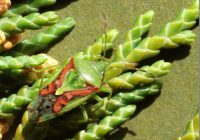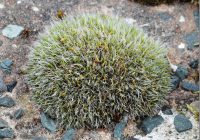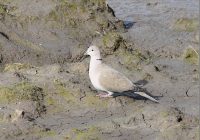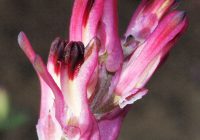Dr Phil Smith’s Wildlife Notes
March 2018
With a few snow flurries at times, and a “mini-beast from the east” on 17th, March was certainly colder than average, while measurable rain on 17 days kept the water-table topped up. The Devil’s Hole at Ravenmeols was impressively flooded, though well below levels seen in 2008, 2013 and 2016. Despite the low temperatures, a few Common Frogs and Common Toads were out and about from about 10th but peak activity was much later. On 21st, I counted 70 batches of frog spawn and the first spawning of Common Toads at Birkdale Green Beach. Earlier, Cabin Hill produced a few Common Toads but no Common Frogs or spawn were seen, probably because the water was too deep to explore effectively. Two pairs of Lapwings were displaying over the fields behind the reserve, their characteristic “pee-wit” call bringing back memories of my childhood when these now uncommon breeders were ubiquitous. A little later, the scrapes at Hightown dunes had some Common Frog spawn batches, a scattering of Common Toads and a single female Smooth Newt. The water was so clear I was able to watch with binoculars a Broad-bodied Chaser nymph crawling across the floor of the scrape.
Apart from the odd Buff-tailed Bumblebee, insects were hard to find. It was completely unexpected, therefore, when I got an email on 12th from Shelagh Parsons to say she had picked up a 2cm-long bug on her Formby doorstep. This proved to be a Western Conifer Seed Bug Leptoglossus occidentalis, an American insect introduced to Britain about 10 years ago, which has spread widely through England and Wales, with a few records for Scotland. I had never seen one of these spectacular beasts before and it seems to be new to the area. Both the young stages and the adults feed on conifers and can sometimes cause economic damage in their home continent.
Equally surprising, was a message a few days later from Joyce Jarvis, including a photo of a small colourful insect she had found on Nootka Cypress at Southport Botanic Gardens. She thought it was a Hawthorn Shieldbug but I recognised it immediately as a Juniper Shieldbug Cyphostethus tristriatus, a species I have been hoping to find for some years. The nearest online records for this shieldbug are for Chester and Manchester but it has been expanding its range and may now be frequent but overlooked in the northwest. Apart from Juniper, it can feed on a number of exotic conifers grown in parks and gardens, including Lawson’s Cypress.
The damp, cool weather proved ideal for mosses and liverworts and I made several visits to record these fascinating lower plants, including distinctive hoary patches of Grey-cushioned Grimmia Grimmia pulvinata which are such a feature of old walls throughout Formby. Returning to Freshfield Dune Heath, I logged over 30 different bryophytes in the reserve’s acidic woodland where the striking Little Shaggy-moss Rhytidiadelphus loreus is a particular feature. A strange jet-black fungus on birch turned out to be Witch’s Butter Exidia glandulosa. It is said to be fairly common and widespread but it was new to me. A drumming Great Spotted Woodpecker and singing Coal Tits reminded me that spring was on the way, though migrants such as the Wheatear were thin on the ground. I did, however, find a Chiffchaff bounding through the Alders at Sands Lake, Ainsdale, on 19th, though it wasn’t singing. A male Goosander returned briefly to the lake in mid-month. Two trips to see a Water Pipit at Crossens were unsuccessful and I had to make do with two Collared Doves and several Teal where the pipit was supposed to be. However, a thousand Pink-footed Geese, a male Scaup and a pair of Mediterranean Gulls on the Marshside reserve made the visits worthwhile.
I joined Joshua Styles at Birkdale Cemetery to check out one of the last recorded localities in the region for the rare Heath Cudweed, a candidate for reintroduction through Josh’s North West Rare Plant Initiative. Beyond the graveyard we found a potentially suitable area of short grassland supporting acid-loving plants such as Bird’s-foot and Mat Grass. Nearby were masses of Common Cornsalad and one patch of Common Fumitory in flower. Despite its name, this is the scarcest of the four fumitories found on the Sefton Coast.
Finally, at the end of the month, Patricia Lockwood and I headed for Southport Marine Lake on an annual pilgrimage to see the Early Sand-grass, one of our rarest plants with only about a dozen British localities. In places on the dunes west of the lake it occurs in such abundance as to colour the ground pink. I also found one or two specimens of a pale form, lacking the red pigment, which I have only seen once before. This was a suitable climax to another eventful month on the Sefton Coast.




